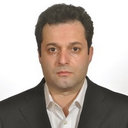Mouth breathing increases the pentylenetetrazole-induced seizure threshold in mice: a role for ATP-sensitive potassium channels.
Ključne besede
Povzetek
Nasal obstruction and consequent mouth breathing have been shown to change the acid-base balance, producing respiratory acidosis. Additionally, there exists a large body of evidence maintaining that acidosis affects the activity of ATP-sensitive potassium (K(ATP)) channels, which play a crucial role in the function of the central nervous system (CNS), for example, in modulating seizure threshold. Thus, in the study described here, we examined whether mouth breathing, induced by surgical ligation of nostrils, could affect the seizure threshold induced by pentylenetetrazole in male NMRI mice. Using the selective K(ATP) channel opener (diazoxide) and blocker (glibenclamide), we also evaluated the possible role of K(ATP) channels in this process. Our data revealed that seizure threshold was increased 6 to 72 hours after nasal obstruction, reaching a peak 48 hours afterward, compared with either control or sham-operated mice (P<0.01). There was a significant decrease in pH of arterial blood samples and increase in CO(2) partial pressure (PCO(2)) during this time. Systemic injection of glibenclamide (1 and 2mg/kg, ip, daily) significantly prevented the increase in seizure threshold in 48-hour bilaterally nasally obstructed mice, whereas it had no effect on seizure threshold in sham-operated mice. Systemic injection of diazoxide (25mg/kg, ip, daily) had no effect on seizure threshold in all groups, whereas higher doses (50 and 100mg/kg, ip, daily) significantly increased seizure threshold in both 48-hour-obstructed and sham-operated mice. The decrease in seizure threshold induced by glibenclamide (2mg/kg, ip, daily) was prevented by diazoxide (25mg/kg, ip, daily). These results demonstrate for the first time that mouth breathing, which could result in respiratory acidosis, increases seizure threshold in mice and K(ATP) channels may play a role in this effect.


